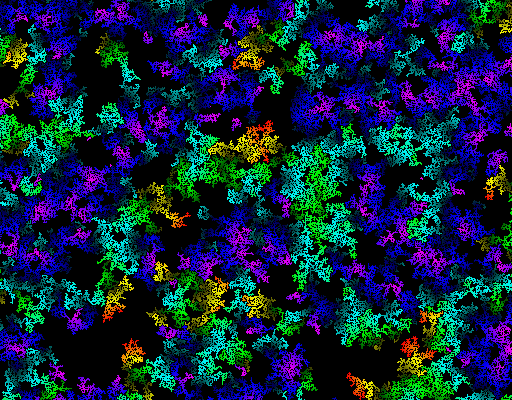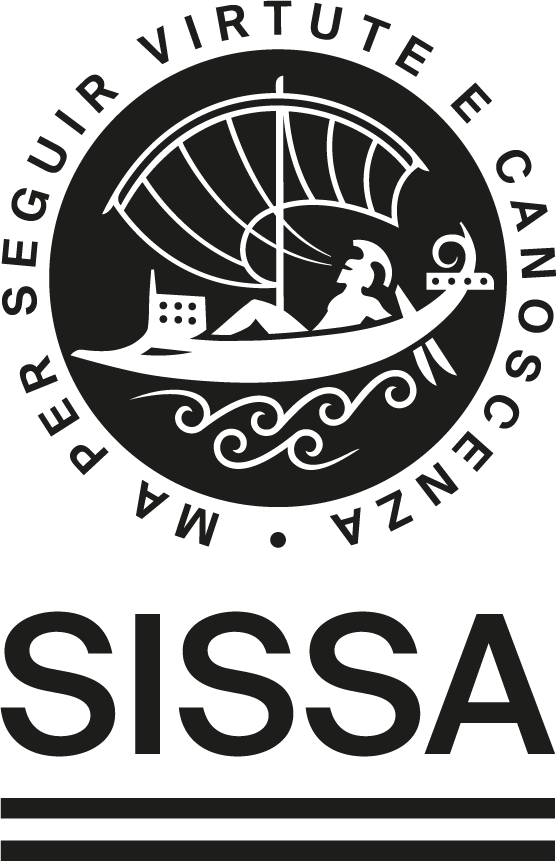
Main Topics
Basics:
- Stochastic and Markov processes: Wiener, Ornstein-Uhlenbeck and Cauchy processes. Chapman-Kolmogorov equation.
- Continuity and differentiability of sample trajectories. Markov processes in physics: Brownian motion.
- Master equation, non-equilibrium and equilibrium stationary states, detailed balance, time-reversal symmetry and increase of entropy.
- Integrability of the detailed balance condition. Kramers-Moyal expansion and Fokker-Planck equation.
- Examples: (i) One-dimensional random walk, master equation, equilibrium and non-equilibrium stationary states.
- Continuum limit of the master equation and the diffusion equation. (ii) Branching and decay process in zero dimension, absorbing state and non-equilibrium. Master equation, generating function, and non-equilibrium phase transition into the absorbing state.
- Diffusion equation and Wiener measure for trajectories: relationship between the Brownian motion and a free quantum particle in imaginary time. Feynman-Kac theorem in the presence of an external potential.
- Applications: (i) First-passage times and distribution of the maximum of a one dimensional process. (ii) First-passage time from the path-integral: persistence probability and persistence exponent. (iii) Gaussian processes and (perturbative) path-integral calculation of the persistence exponent for a non-Markovian process.
- Langevin equation, microscopic and mesoscopic variables, and separation of time scales. Langevin equation for the Brownian, mean square displacement, and Fick’s law. Generalized Langevin equation for a classical particle coupled to a thermal bath of harmonic oscillators: memory kernel and non-Markovian dynamics. Equilibrium distribution function and generalized Einstein relation.
- Formal solution of the Langevin equation via stochastic integrals: definition of the stochastic integral and comparison with Riemann’s integral, Ito and Stratonovich differential calculus. Response function and relation to correlation functions.
- Time-translational and time-reversal symmetries and the fluctuation-dissipation theorem.
- From the Langevin equation to the Fokker-Planck equation.
Functional methods (from stochastic equations to field theory)
- Fluctuations, correlations and field-theoretical methods. The Lotka-Volterra model and its mean-field description.
- Master equation of discrete stochastic interacting particle systems (Doi-Peliti formalism): Fock space (bosonic ladder operators) and the associated Hamiltonian. Reaction and diffusion Hamiltonians: the case of the irreversible binary annihilation A+A-> A. Particles with exclusion and SU(2) algebra. Averages of observables and the projection state. Path-integral formulation of the master equation: Coherent states and their properties.
- Representation of the evolution operator. Expectation value of an observable as a path integral over the fields. Continuum limit for the process of binary annihilation reaction with diffusion and structure of the resulting field theory.
- Langevin equation and its field-theoretical representation (Martin-Siggia-Rose/Janssen-De Dominicis-Peliti formalism): average over the stochastic noise and the response field. Jacobian of the change of variable. Normalization and vanishing of the vacuum diagram.
Applications: Scaling behavior in a non-equilibrium phase transition
- Field-theoretical analysis of the simple annihilation process A + A -> 0. Relation with the problem of directed percolation. Phase diagram in the absence of annihilation: critical exponents. Reaction Hamiltonian, mean-field solution and the rate equation. The role of fluctuations: modification of phase diagram and of the exponents.
- Power counting, anisotropic scaling, and the upper critical dimensionality. Relevance of the various interaction terms and rapidity reversal. Propagators and perturbative expansion. One-loop contribution to the propagator in the frequency domain: diagrams and combinatorics. Dimensional regularization and calculation of the relevant integral. Renormalized diffusion coefficient. Dimensional expansion, minimal subtraction and calculation of the renormalization constants. Renormalization-group flow and the Callan-Symanzik equation. Scaling behavior at the fixed point.

